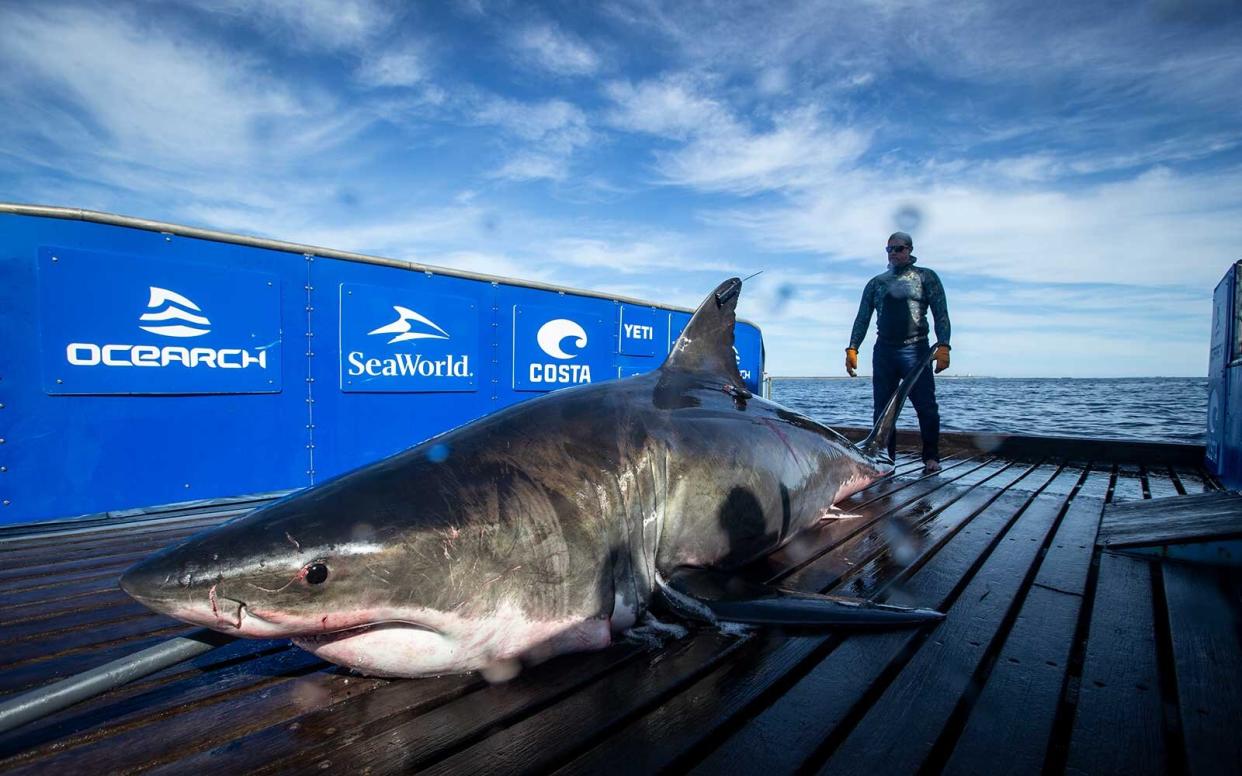There's a Massive, 2,000-pound Great White Shark Swimming Along the East Coast

OSEARCH/R.SNOW
The second-largest great white shark ever seen in the northwest Atlantic by OCEARCH, a non-profit that tracks marine life in conjunction with SeaWorld, has been spotted along the eastern coast of the United States, according to CNN.
We suppose we won’t be doing a lot of swimming any time soon.
The shark, which weighs over 2,000 pounds and measures 15 feet, 5 inches long, was named Unama'ki by the group. She was first seen near Nova Scotia back in September and has headed further south since then. On Oct. 13, she apparently was spotted 50 miles off the coast of Myrtle Beach, South Carolina, WSOC-TV reported. According to the OCEARCH website, the shark was seen on the western coast of Florida as of Oct. 28.

OSEARCH
OCEARCH explained on its website that the name Unama'ki is a word that comes from the indigenous Mi'kmaq people of Nova Scotia, which means “land of the fog.” It was also the name the Mi'kmaq people called Cape Breton, Nova Scotia.
The mature female shark has also been seen off the coasts of North Carolina, Virginia Beach and Atlantic City in New Jersey, WSOC-TV reported. Sounds like quite a road trip. Or, sea trip, rather.
OCEARCH officials believe she is heading toward a place where she gives birth. The group hopes to find a previously undiscovered great white shark nursery when she gets there, according to WSOC-TV.
The Florida Fish and Wildlife Conservation Commission told CNN that peak shark activity is usually between April and October. It’s not uncommon for sharks to migrate south for the winter.
While shark attacks may have marginally increased in the last 20 years, it is still highly unlikely to be attacked by a shark, especially outside of the peak summer months. According to SafeWise, there have only been 17 fatal attacks since 2000. The Florida Fish and Wildlife Conservation Commission told CNN that people are “30 times more likely to be struck by lightning in Florida than to be bitten by a shark.”
According to The International Wildlife Museum, the specific odds of being bit by a shark are 1 in 3,748,067.
